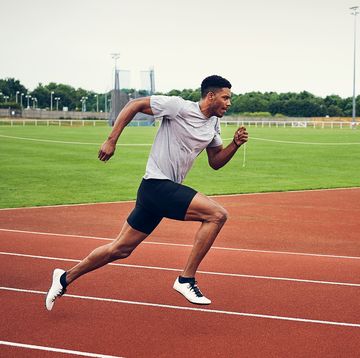On December 15th 2014, four members of the Asheville running collective, a club in North Carolina, US, attempted to set a new course record on a one-mile stretch of path along the French Broad River. At stake: major bragging rights among a close circle of friends on the social media training website Strava.
‘Word got out [that members were going after the segment record],’ says Javan Lapp, 27, who held the record. ‘It all happened organically; everyone was being quiet about it and secretly going down there to try to run fast.’
Lapp worked until about 7pm that day, keeping tabs on his clubmates’ progress via the website. Several friends ran fast, but Lapp wanted to put his record out of reach. Modifying his intended workout, the former 4:08 miler ran 4:51, fast enough to retain his record. Although well short of his PB, the effort was intense enough that Lapp abandoned the rest of his planned mile repeats in favour of shorter strides.
Episodes like this show that the social aspect of training sites can exert a powerful force on how much effort a runner puts into a session. But the key is to maximise the benefits these sites can offer without letting them negatively affect training.
READ: Do all those stats matter?
Reid Coolsaet is the second-fastest Canadian marathoner in history, with a PB of 2:10:55. He’s also an avid Strava user. Coolsaet, a coach, originally signed up on the website so he could track his clients’ progress, but then began posting his own training. ‘I became comfortable sharing everything,’ he says. ‘There’s much more to training than just the numbers; the specific efforts are key. Strava gives each run an audience and people tend to run faster in front of others. Knowing people are watching, even after the fact, annuls the loneliness of the long-distance runner.’
In psychology this is known as the social facilitation effect: if you believe you’re being watched, you believe you’re being evaluated. ‘That increases effort, which leads to enhanced performance,’ says Cindra Kamphoff, a sports psychologist who works with high-performance athletes. ‘So when you compete against someone else, it does make you run faster.’
But do you want to always be competing against somebody? Good training is based on balancing hard workouts with recovery days. If you’re constantly vying to be among the top runners on a route, or trying to avoid embarrassing paces, you risk getting injured or experiencing physical and mental burnout. ‘Those who are trying to get higher on the leader board have a higher sense of competitiveness,’ says Kamphoff. ‘That can create a lot of pressure and focus on your final time. If you’re doing that every day it can be maladaptive to your training.’
READ: 3 Do all those stats matter
Connecting with others in real life is where social fitness websites offer their greatest reward, says Kamphoff. Keeping tabs on friends and teammates can help increase your motivation to train. The positive feedback that comes from receiving encouraging comments on your runs enhances this effect. This motivation may not be essential, but, as Kamphoff points out, ‘It’s still motivation. As long as you’re using it in a way that’s beneficial, and you’re not making decisions based on competing against someone else, then it’s good. If you start to feel you’re not in control of your own perspective, then perhaps don’t do it anymore.’
Since setting his segment record, Lapp has stayed out of the fray. ‘I probably didn’t have quite the quality workout I could have [that day],’ he says. These days Lapp uses Strava mostly as a training log and a way to keep track of his teammates. Doing so also helps sort fact from fiction. ‘There have always been runners who claim to be doing huge workouts when nobody is around,’ he says. ‘Now you can look at the run. If it’s not on Strava and there are no witnesses, it didn’t happen.’













